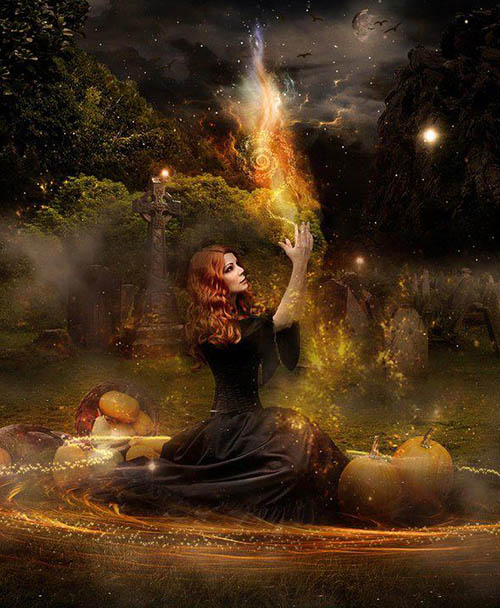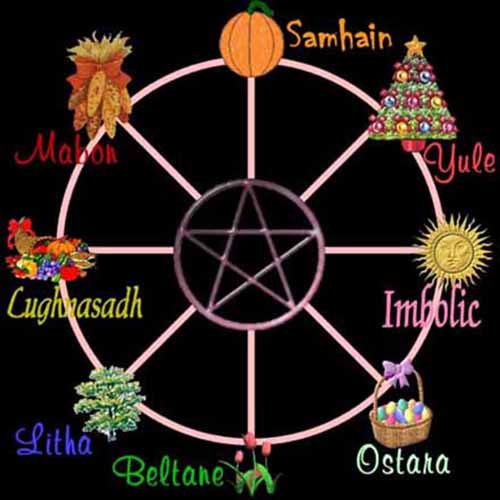

Samhain is the ancient Celtic festival that marks the turning of The Wheel of the Year from harvest's end to winter's beginning - a sacred threshold when the veil between worlds grows thin. It honors the ancestors, embraces transformation, and reminds us that within every ending lies the seed of rebirth.
Samhain in the simulation of reality is a call to awaken deeper truths, embrace the mystery of existence, and honor the invisible threads that weave us all together - transcending the screen to touch what lies beyond the algorithm.
Samhain begins on October 31 as Halloween ends. Halloween's origins date back to the ancient Celtic festival of Samhain (pronounced sow-in). It is the time between Samhain and Brigid's Day "the period of little sun." Thus, Samhain is often named the "Last Harvest" or "Summer's End". The Earth nods a sad farewell to the God.
The term derives from the name of a month in the ancient Celtic calendar, in particular the first three nights of this month, with the festival marking the end of the summer season and the end of the harvest. The Gaelic festival became associated with the Catholic All Souls' Day, and appears to have influenced the secular customs now connected with Halloween. Samhain is also the name of a festival in various currents of Neopaganism inspired by Gaelic tradition.
Samhain is a Gaelic festival marking the end of the harvest season and the beginning of winter or the "darker half" of the year. Traditionally, it is celebrated from the very beginning of one Celtic day to its end, or in the modern calendar, from sunset on 31 October to sunset on 1 November, this places it about halfway between the autumn equinox and the winter solstice.

Wheel of the Year
It is one of the four Gaelic seasonal festivals, along with Imbolc, Beltane and Lughnasadh. Historically, it was widely observed throughout Ireland, Scotland and the Isle of Man. Similar festivals are held at the same time of year in other Celtic lands; for example the Brythonic Calan Gaeaf (in Wales), Kalan Gwav (in Cornwall), and Kalan Goanv.
Samhain is believed to have Celtic pagan origins and there is evidence it has been an important date since ancient times. The Mound of the Hostages, a Neolithic passage tomb at the Hill of Tara, is aligned with the Samhain sunrise.
It is mentioned in some of the earliest Irish literature and many important events in Irish mythology happen or begin on Samhain. It was the time when cattle were brought back down from the summer pastures and when livestock were slaughtered for the winter.
As at Beltane, special bonfires were lit. These were deemed to have protective and cleansing powers and there were rituals involving them. Like Beltane, Samhain was seen as a liminal time, when the boundary between this world and the Otherworld could more easily be crossed. This meant the Aos Sí, the 'spirits' or 'fairies', could more easily come into our world.
Most scholars see the Aos Si as remnants of the pagan gods and nature spirits. At Samhain, it was believed that the Aos Si needed to be propitiated to ensure that the people and their livestock survived the winter. Offerings of food and drink were left outside for them.
The souls of the dead were also thought to revisit their homes seeking hospitality. Feasts were had, at which the souls of dead kin were beckoned to attend and a place set at the table for them.
Mumming and guising were part of the festival, and involved people going door-to-door in costume (or in disguise), often reciting verses in exchange for food. The costumes may have been a way of imitating, and disguising oneself from, the Aos Si.
Divination rituals and games were also a big part of the festival and often involved nuts and apples. In the late 19th century, Sir John Rhys and Sir James Frazer suggested that it was the "Celtic New Year", and this view has been repeated by some other scholars.
In the 9th century AD, Western Christianity shifted the date of All Saints' Day to 1 November, while 2 November later became All Souls' Day.
Over time, Samhain and All Saints'/All Souls' merged to create the modern Halloween. Historians have used the name 'Samhain' to refer to Gaelic 'Halloween' customs up until the 19th century.
Since the later 20th century, Celtic neopagans and Wiccans have observed Samhain, or something based on it, as a religious holiday. Neopagans in the Southern Hemisphere often celebrate Samhain at the other end of the year (about 1 May). Read more ...